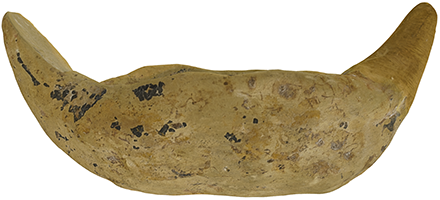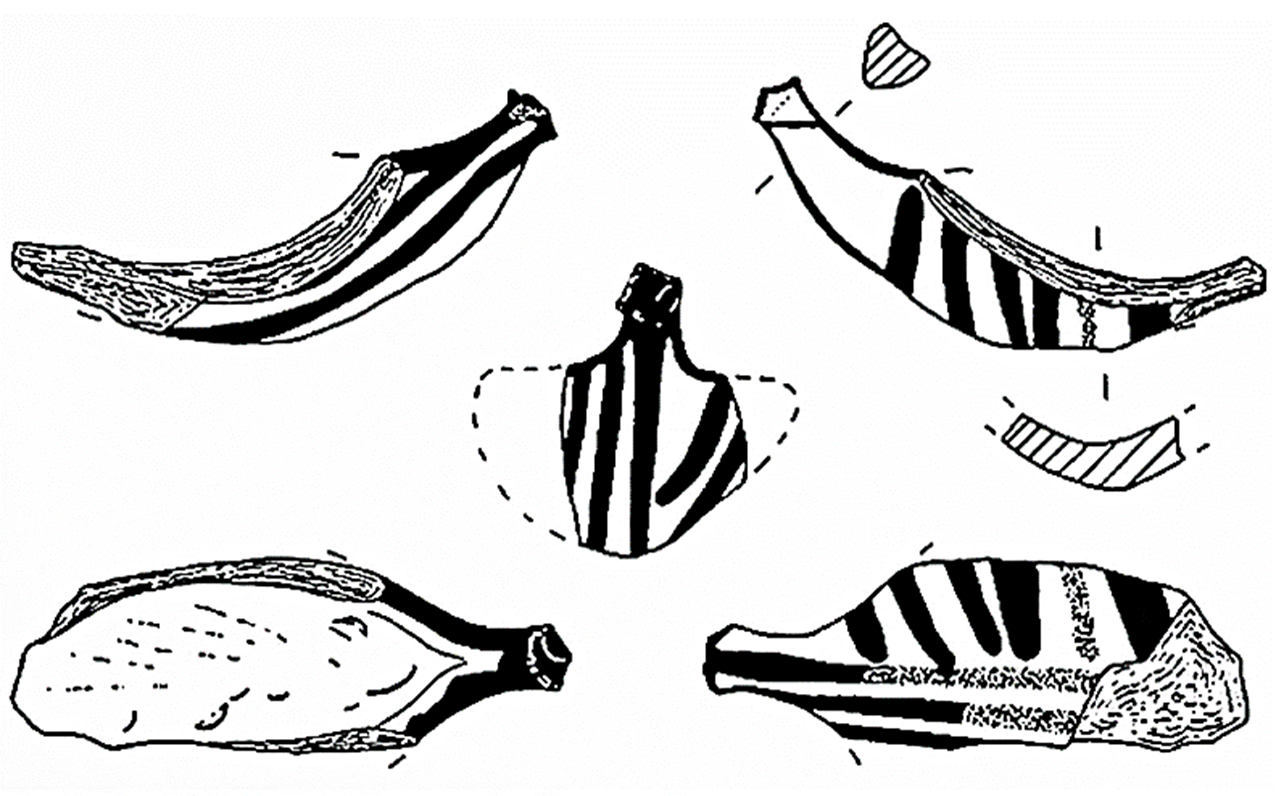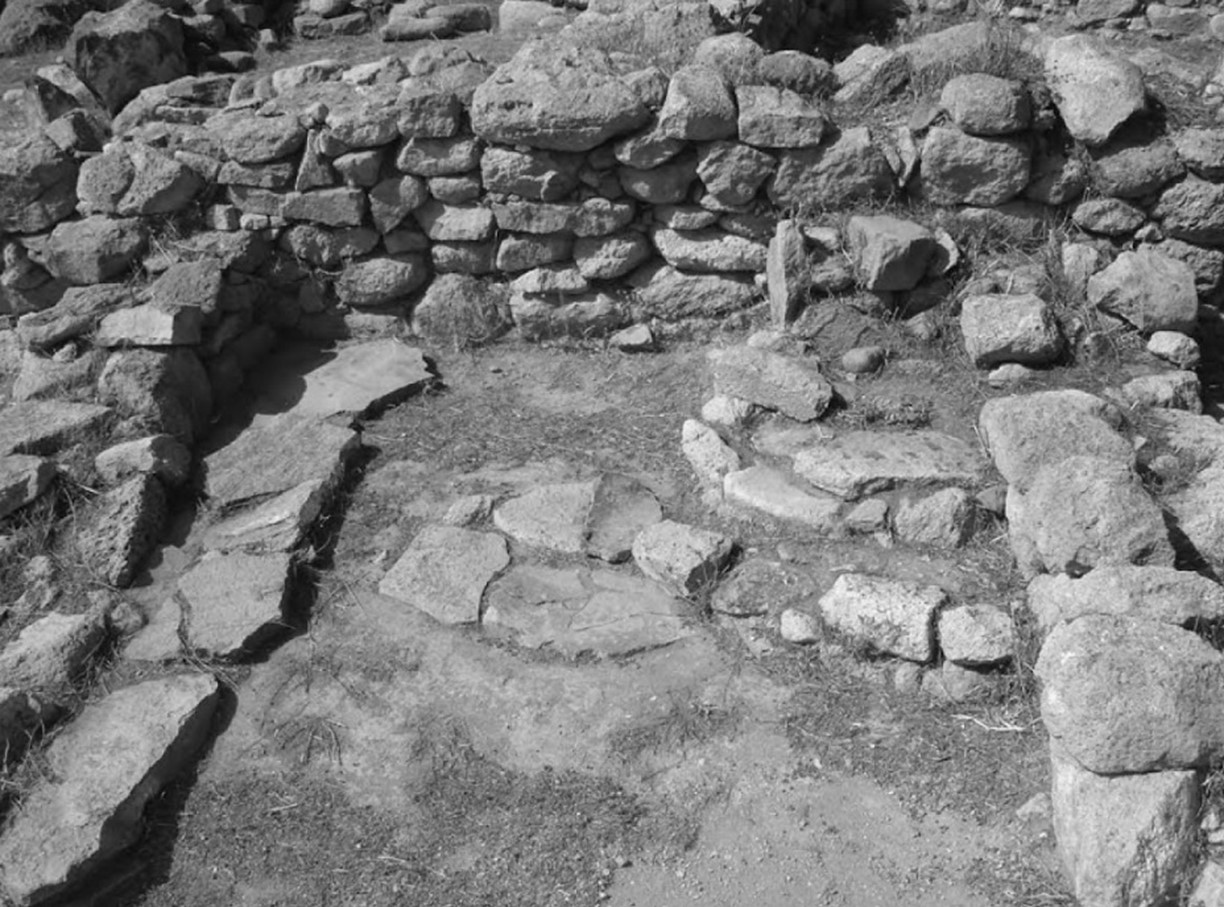Bow fragment with a sprit. Painted lines along the gunwales and keel line, with at least two parallel longitudinal lines on the starboard side and another six extant perpendicular lines from the keel line to the gunwale line on the port side. The extremity is also painted.
Ship model
A10
LH IIIA-B (1420/10-1200/1190)
Sanctuary of Agios Konstantinos, Methana
L: 7.1 cm; W: 2.4 cm (reconstructed L: c. 9-10 cm; W: c.4-4.2)
Terracotta model fragment, buff to reddish-buff clay, self-slipped, orange to reddish-brown paint. Traces of fingernails and smoothing on the interior
Peiraios Archaeological Museum 5617
Wedde 2000: 312, no. 336; 2003
The sanctuary is located on the east coast of the Methana peninsula (northeast Peloponnese) and is part of a large architectural complex that had a megaron amongst its many rooms. Despite its modest size, Room A which was the focus of cult activity (4.30 x 2.60 m) has provided evidence of intense ritualized ceremonies. The room's features comprise a stone bench, a low stone platform long one of the walls, a partially paved floor, and a hearth filled with ash and burnt animal bones. Over 150 clay figurines were found scattered over the stone bench and three low stone steps leading to it. These include mostly bovids, but also human figures (riders, charioteers, bull-leapers, a female) and models of thrones, tripod tables, a bird and a boat. Additional paraphernalia included drinking vessels, cooking pots, a triton shell with an intentionally broken apex, as well as ceramic equipment associated with libations - notably an animal-headed rhyton with the likeness of a fantastic beast exhibiting hybrid features of a pig and a fox. Numerous limpet shells and eight kylikes were also found. The totality of the finds appear to represent a single destruction layer (Konsolaki 2002). The fragmentary burnt bones came mostly from juvenile and neonatal pigs which were either boiled or roasted in the hearth (possibly on spits given that a stone spit stand was found by the hearth), with whole carcasses brought into the room. The filleting cut marks suggest some of them were eaten, with the bones subsequently thrown into the hearth and burned. The sanctuary thus presents clear evidence of animal burnt sacrifices. Additional bones of sheep and goat were found inside the room, although these were not whole (chiefly meat bearing parts of the animals) and most were not burnt, suggesting they were likely not offerings. Hamilakis sums up the overall effect of the rituals happening within Room A thus:
"We are dealing here with a small space, possibly with restricted access, but one which was the focus not only of exhibition and deposition practices (of figurines, of bones, of artefacts), but also of intense embodied ceremonies with strong sensory effects: the smells of cooking meat, of fat burning, the smoke produced by the hearth, the tasting of food and drink, the sensorial experiencing of marine as well as terrestrial foods, the intoxicating effects of alcohol, and possibly the sound of music generated by the modified triton shell which would have produced a fully embodied tactile experience, not just an aural one. The physical proximity and restriction would have amplified these effects, and the smoke and smells would have infused and enveloped the bodies of the participants, producing a transcendental locale, as well as a unified sensory and corporeal landscape." (Hamilakis 2011: 216-217)
Wedde, M. 2000. Towards a Hermeneutics of Aegean Bronze Age Ship Imagery. Peleus Studien zur Archäologie und Geschichte Griechenlands und Zyperns, vol. 6. Bibliopolis: Mannheim and Möhnsee.
―――. 2003. “The Boat Model from Late Helladic IIIA-B Sanctuary at Agios Konstantinos (Methana) and its Typological Context,” in E. Kondolski-Yannopoulou (ed.) Argosaronikos: Proceedings of the 1st International Conference on the History and Archaeology of the ArgoSaronic Gulf, Poros, 26-29 June 1998. Athens, pp. 285-300.









